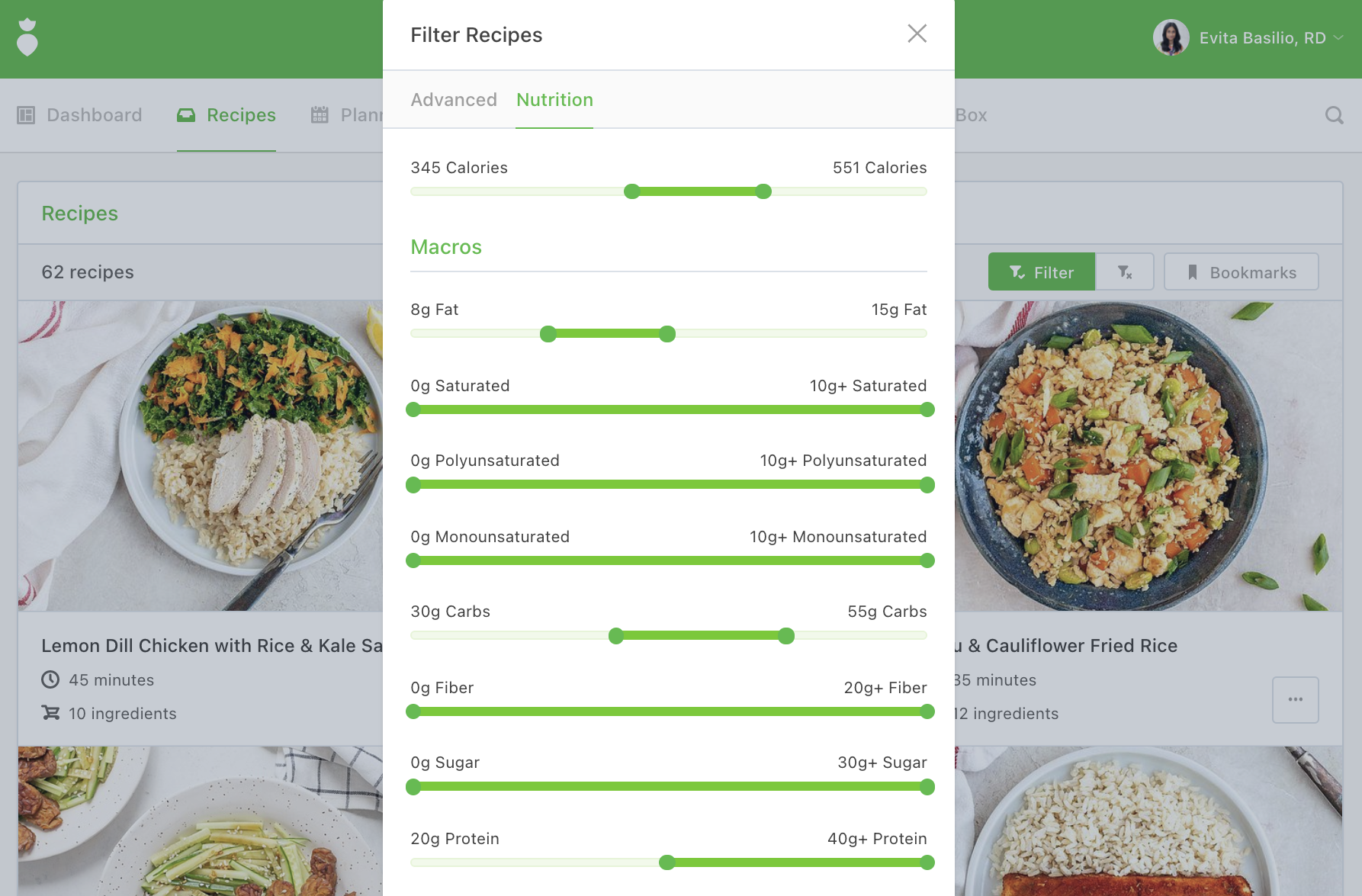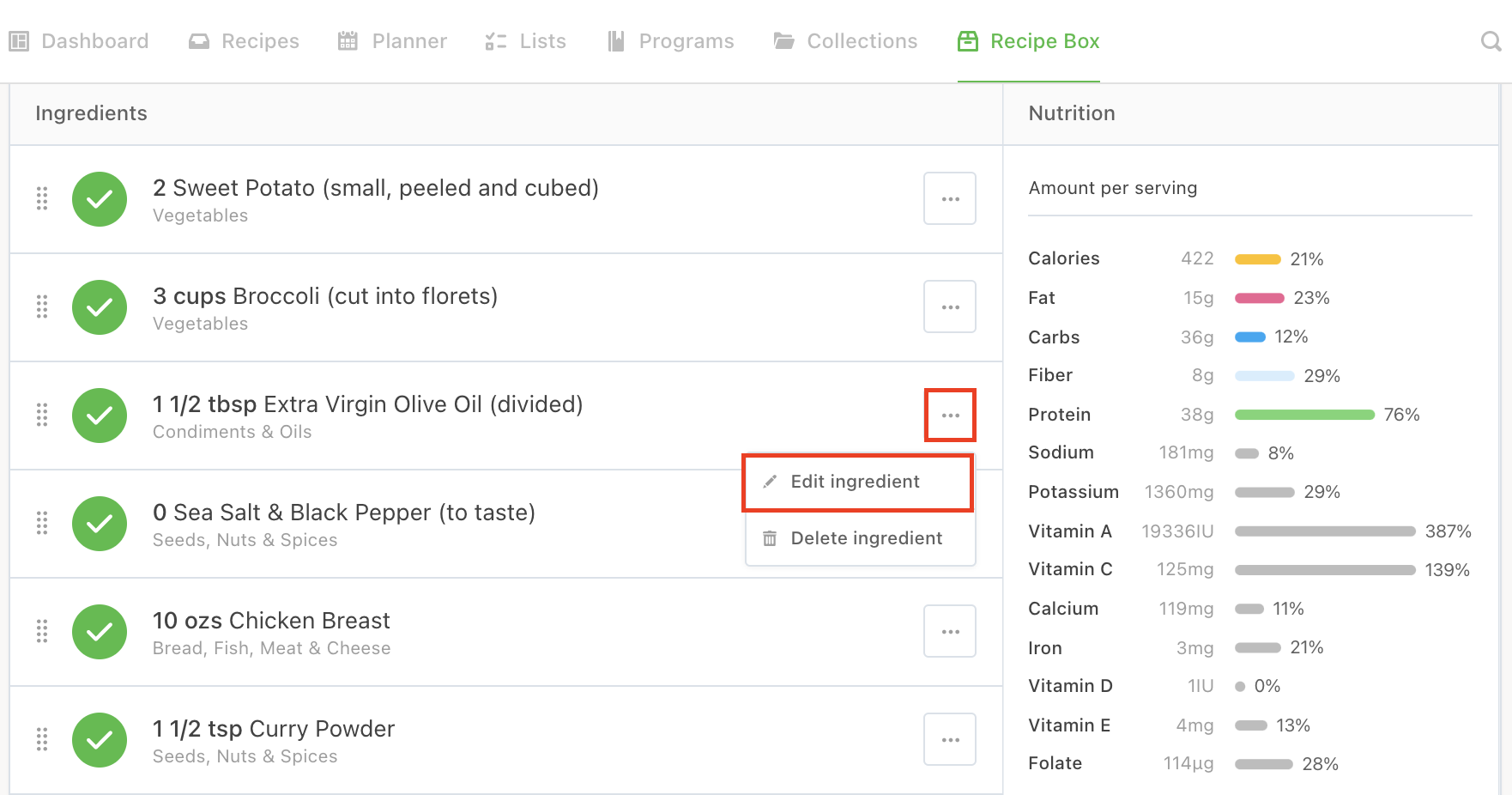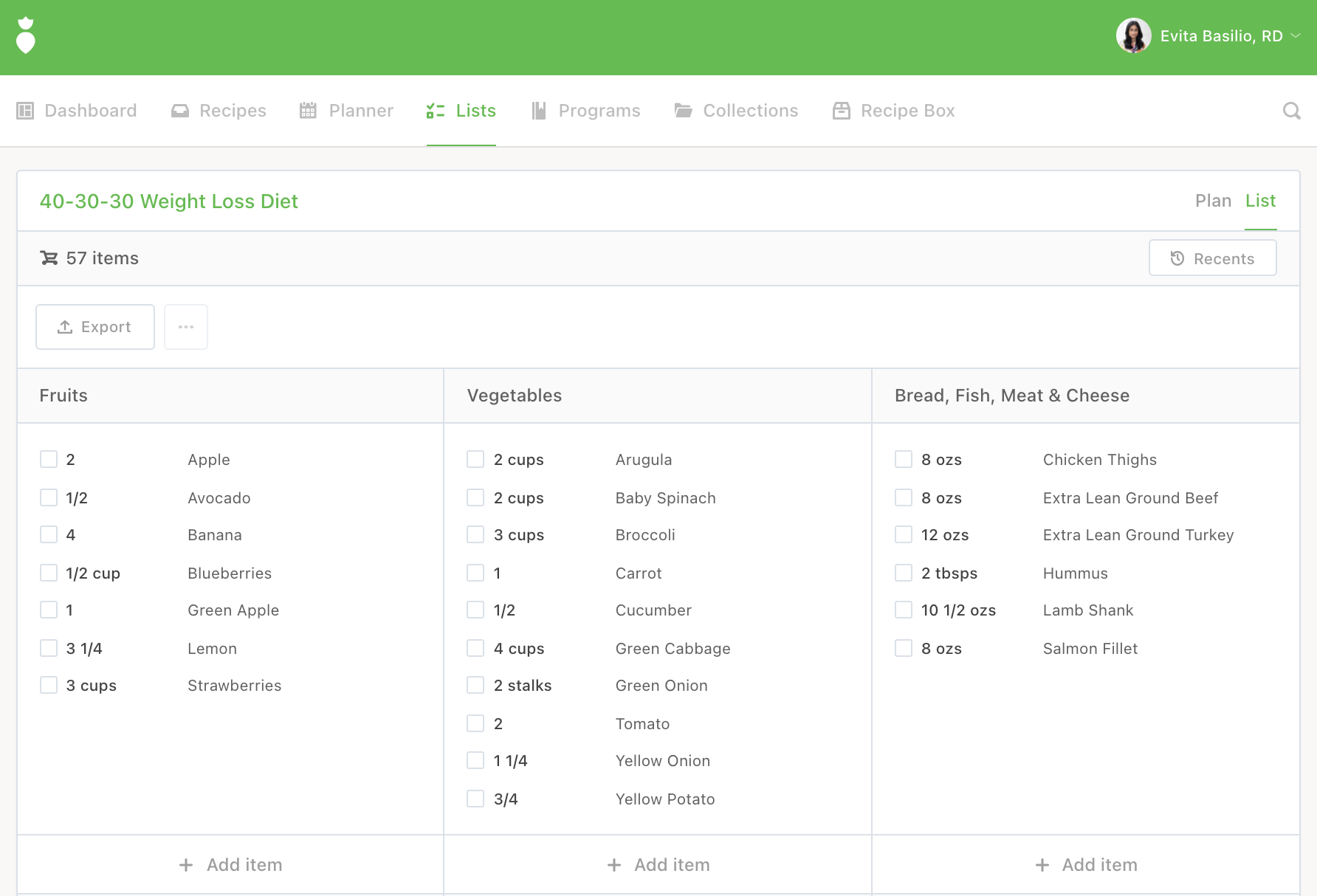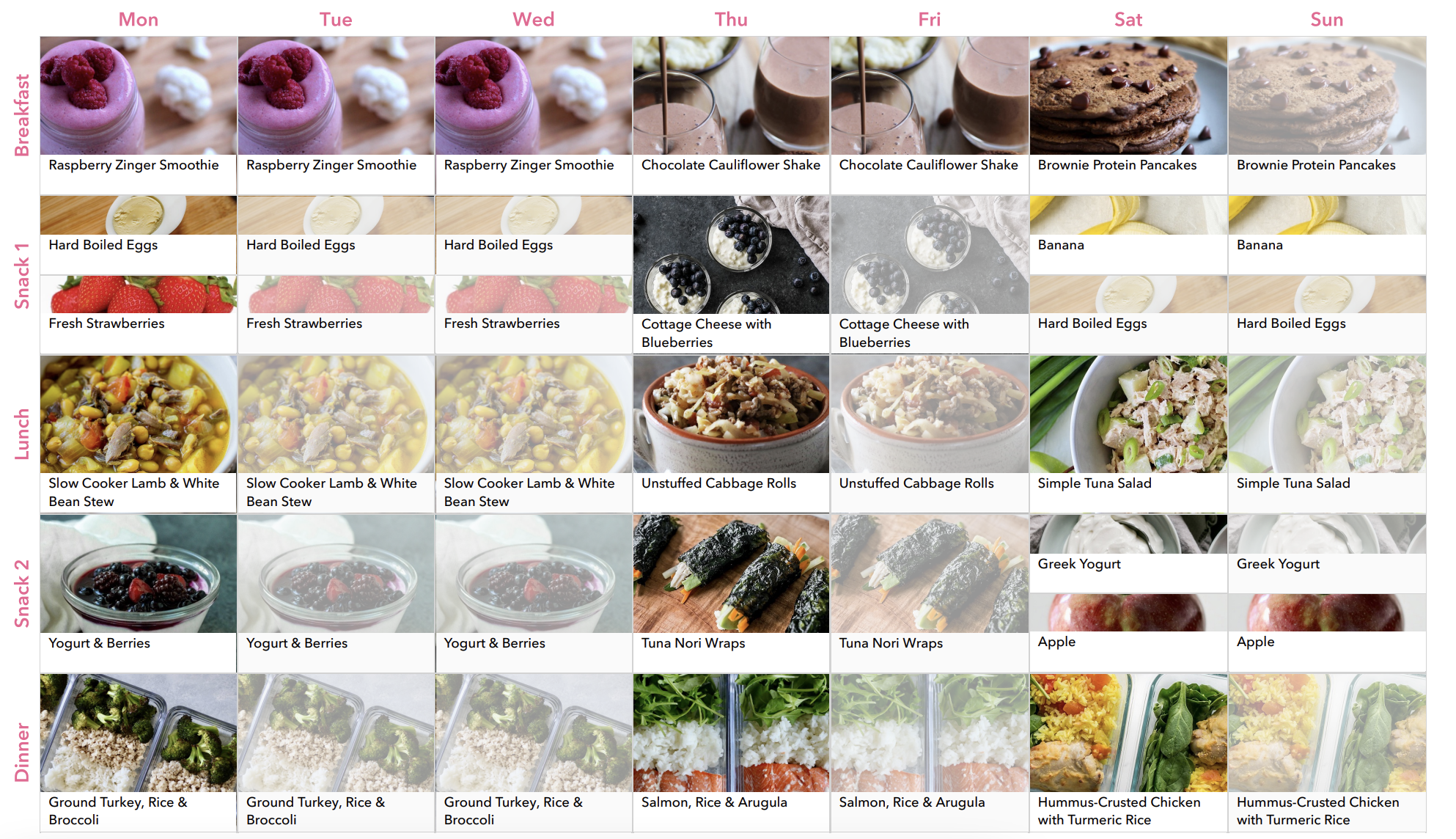There’s no doubt that macro-based diets are on the rise. Whether you feel counting calories and macros is helpful or not, more and more clients are taking an interest in tracking the numbers associated with their nutrition.
Teaching your clients about energy, carbohydrate, protein, fat, and fiber intake can help them learn more about how food affects their bodies and what a balanced diet looks like. Eating the right macronutrient balance can improve appetite, hormones, energy levels, and nutrient consumption.
With all of this being said, simply giving your clients a set of numbers to hit and sending them off to figure out how to hit them is not the most helpful approach.
Providing a personalized meal plan that shows clients how simple and fun it can be to hit their targets will be a game-changer for keeping your clients compliant, on-track to reach their goals, and coming back to you for more.
Today we are going to teach you how to create personalized meal plans based on unique calorie and macronutrient targets. Following these steps will take your meal plans and your clients to the next level!
Step 1: Determine Your Client’s Macro Targets
The first and most important step in creating a meal plan based on specific calorie and macronutrient targets is to determine what those targets are.
There are a lot of different formulas that you may use to calculate calorie and macro needs. There are varying macronutrient distribution philosophies as well. There is no one-size-fits-all approach to this, and to get the right numbers you will need to take into account your client's:
- Height and weight
- Body fat percentage
- Life stage
- Health status
- Nutrition and fitness goals
You can start by calculating your client’s daily Total Energy Expenditure (TEE) for an accurate calorie target. Then use this calorie target to calculate the macronutrient ratios that will help them reach their desired goal.
A typical macronutrient recommendation is:
- Carbohydrate: 45 - 65% of total calories
- Fat: 20 - 35% of total calories
- Protein: 10 - 35% of total calories
Looking for a calculator? Try the USDA DRI Calculator for Healthcare Professionals which uses the most current scientific knowledge about both macro and micronutrient needs.
Macronutrient targets change depending on your client’s nutrition needs and goals. For example, carbohydrate targets should increase with physical activity:
- Moderate exercise (1 hour/day) requires 5-7 g/kg/day of carbohydrates.
- Moderate to high-intensity exercise (1-3 hours/day) mandates 6-10 g/kg/day of carbohydrates.
- Ultra-endurance athletes with extreme levels of commitment to daily activity (4-5 hours of moderate to high-intensity exercise every day) may need up to 8-12 g/kg/day of carbohydrates.
Pre-competition and competition recommendations also vary according to the duration of exercise.
The general protein recommendation is 0.8-1.0 g/kg of body weight for a healthy adult. However, some additional considerations are:
- 1.4-1.8 g/kg for athletes (endurance, strength training).
- 1.0-1.5 g/kg for elderly adults and clients with cancer or ALS.
- 1.5 g/kg for inflammatory bowel disease.
- 1.0-1.2 g/kg for liver cirrhosis.
- 1.1 g/kg in pregnancy (+50 g/day for multiples).
- 1.2-1.5 g/kg for clients that are moderately hypermetabolic (infection, head injury, temperature >38°C, COPD).
- 1.5-2.0 g/kg for hypermetabolic clients.
The recommended distribution for fats is:
- 15-20% monounsaturated fat.
- 5-10% polyunsaturated fat.
- Less than 10% saturated fat.
- 0% trans fat.
- Less than 300 mg per day of cholesterol.
Step 2: Create an Eating Schedule
Once you've determined your client's nutrient targets, the next thing you need to understand is your client's lifestyle, skills, current diet likes, dislikes, and eating patterns so you can create a realistic eating schedule that will help them succeed.
Tip: One of the best ways to understand your client's lifestyle is to have them complete this Meal Planning Assessment.
Once you better understand your client's lifestyle, you can determine how their targets will fit into their eating schedule. For example, you might suggest your client eats three meals and two snacks per day, and you can divide the calories and macros between these meals.
Step 3: Build A Balanced Meal Plan
There are three options when it comes to building a balanced meal plan based on your client's macros: using automation, building it from scratch, or using a pre-made Program.
Option 1: Use That Clean Life's Automator
Automator helps you generate personalized smart plans based on calories, macros, and diet type in just a few clicks. You can specify any Rules such as calories (1200 - 5000), macros (fat, carbs, protein), tags, exclude ingredients, and then click the Create Plan button to automatically generate a plan that fits your client's macros. Easy peasy!

Option 2: Plan From Scratch
If you prefer to hand-select recipes for your client, you can easily search for meals within That Clean Life based on calories and macros using our Nutrition Filters.

If you find a recipe that you know your client would love but doesn’t quite fit their macros, you can very easily modify the ingredients to make it work for their needs. When you modify a recipe using That Clean Life, the nutrition information will update in real-time. This allows you to easily increase protein, reduce fat, or remove added sugars by changing the quantities of different ingredients used.

As you add meals to your Planner, That Clean Life will automatically give you the daily nutrition totals. This analysis includes both calorie and macronutrient totals as well as micronutrients so you can be sure all your client’s needs are being met.

If you prefer to view total macronutrients as a percentage, you can do that by clicking on the pie icon from your Planner.

Option 3: Use A Pre-Made Program
Some of That Clean Life's pre-made programs like the Ketogenic Diet, High Calorie, High Protein Program and 40-30-30 Weight Loss Diet have set macronutrient targets and are ready to use with the right balance of carbs, protein, and fat.
You can modify the current programs we have to meet your calorie, macro, and micronutrient targets. You can remove or add recipes or swap them. You can also modify recipes to add, remove or change ingredients.
Including a shopping list with your client's meal plan is also key to their success. That Clean Life will automatically create an itemized grocery list based on the recipes added to the plan.

Step 4: Give Your Client Their Awesome Plan!
Once your plan is finished, simply export the meal plan, grocery list, and recipes from That Clean Life as one single PDF to send to your client. We'll take care of applying your personal branding to every page.
Tip: Include an introduction to your meal plan using our "Meal Plan Introduction" snippet, which outlines what is included in the plan, along with tips to help your client succeed.
Now you can hand your client a professional, beautiful, delicious meal plan that helps them hit their macros!


Offering premium resources like this to your clients will help them succeed. Not only that, but they will be more likely to keep coming back for more. A happy, successful client is the most powerful marketing tool you will ever have!

